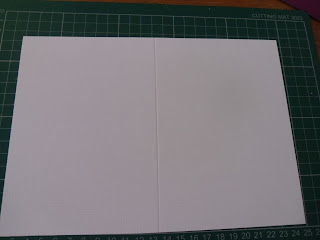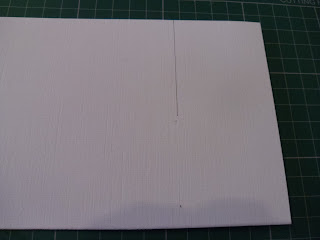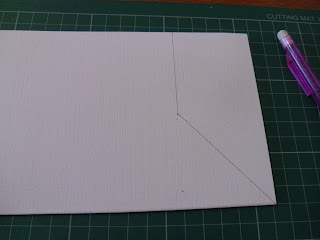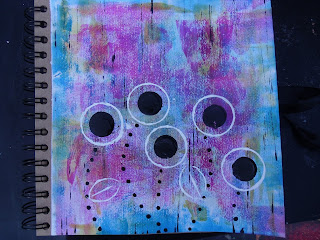
Loved doing this in class today. This tee pee style is a Claire Rowlands way of making it....it couldn't be more simpler :)
I began with a piece of card 9" x 6 1/2"
I then scored it at 4 1/2" along the 9" side, to fold in half.

With the fold at the bottom, and the open ends at the top, measure 4 1/2" along the top, and put a pencil mark on the open edges. Repeat this along the bottom, folded edge.

Use a ruler to line up between these two marks ......
.....and draw a line 2 1/2" down from the top.

From where this line ends, join up to the bottom corner.

Remove this section.

Open out.

Score from the centre fold line at the top, down to the outer left point. Repeat to the right side.

You will now be able to fold it into the tee pee shape.

Next cut the decoration papers. You will need :
2 of 4 1/4" squares
1 or two (if you want different papers) of a 5 cms square....this will allow you to trim a slither off if necessary.
 Cut them in half diagonally.
Cut them in half diagonally. Arrange the pieces how you would like them (any wording or directional patterns will need to be considered for when the tee pee is closed up. Trim any slithers off as necessary. Glue in place.

In it's folded position, you can overlap in either direction, punch a hole where you want your ribbon to come out....outer layer only. Then with a pencil, draw through the hole to mark the layer underneath.

 This next hole needs to go through the next two layers...which hopefully the folded position is obvious from the photo on the left. If you can't punch through both layers at the same time, punch the first hole and draw through as you did in the previous step.
This next hole needs to go through the next two layers...which hopefully the folded position is obvious from the photo on the left. If you can't punch through both layers at the same time, punch the first hole and draw through as you did in the previous step. Fold up.
 Thread
ribbon through, and if you wish any embellishments e.g. bells, charms
etc., and a greeting. Alternatively the greeting could be added to
another face of the teepee.
Thread
ribbon through, and if you wish any embellishments e.g. bells, charms
etc., and a greeting. Alternatively the greeting could be added to
another face of the teepee. 
I stamped a picture I wanted to put on it. As there were parts I didn't wish to cut off, I firstly marked in pencil where my die was going to cut, marking both the outer and the inner circles. I cut around the overhang (stocking and candy cane) to just past the inner marked circle. This allowed me to lift the overhang, over the top of the die so it wouldn't cut through these parts. This is how it looks after cutting, with the die still in position.
I also cut a slightly larger, decorative mat to frame the picture....
....coloured it in....
....and fastened it to the front of my card. Et voila :) See the photo at the top
Christine


































